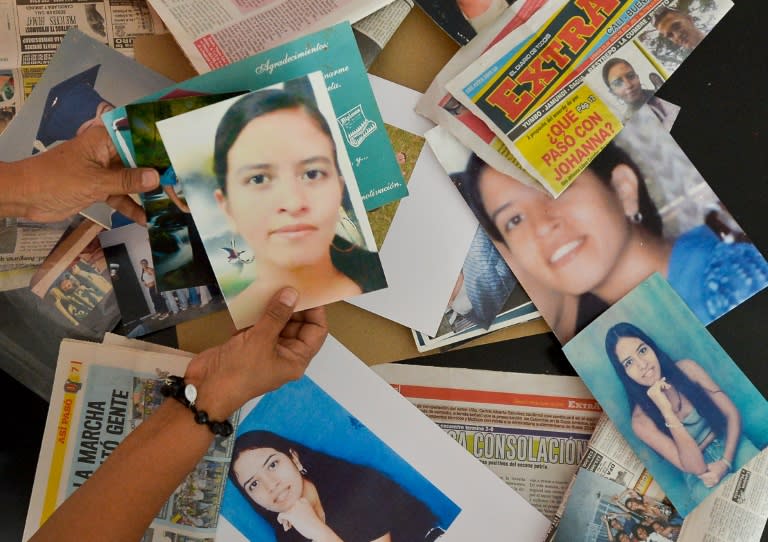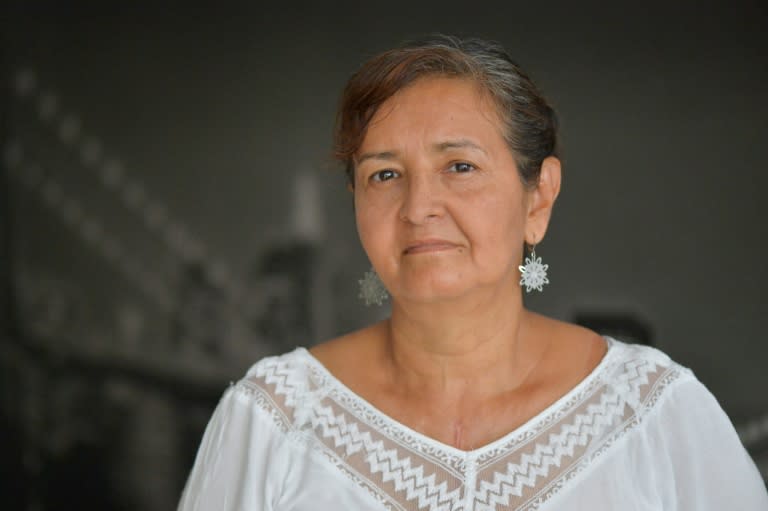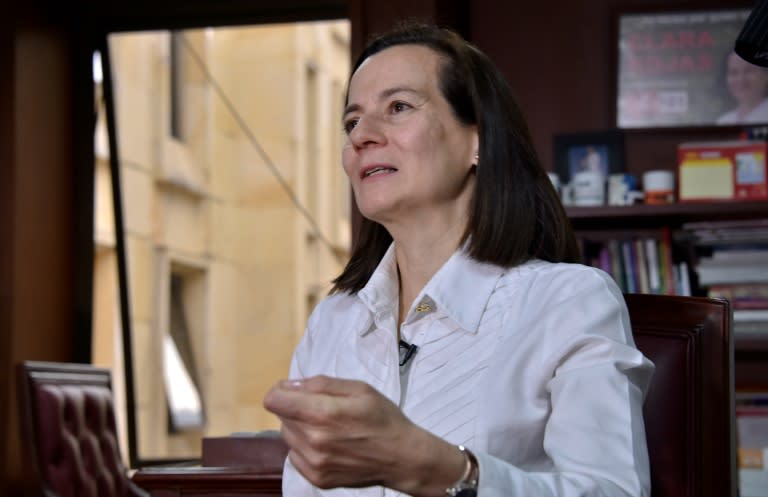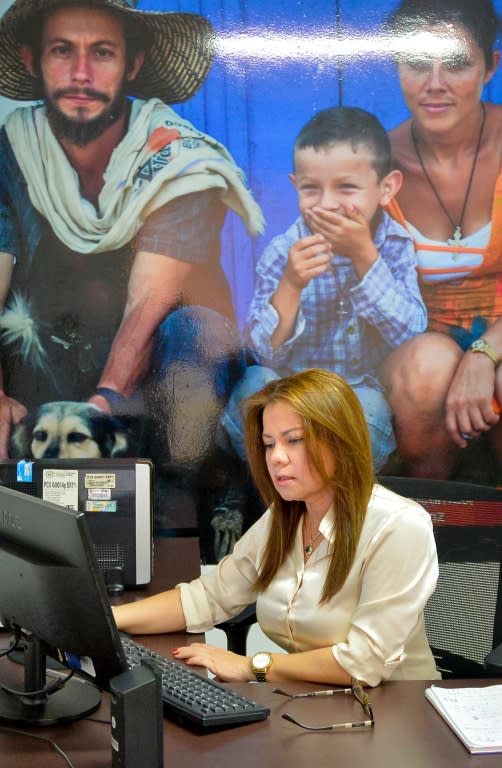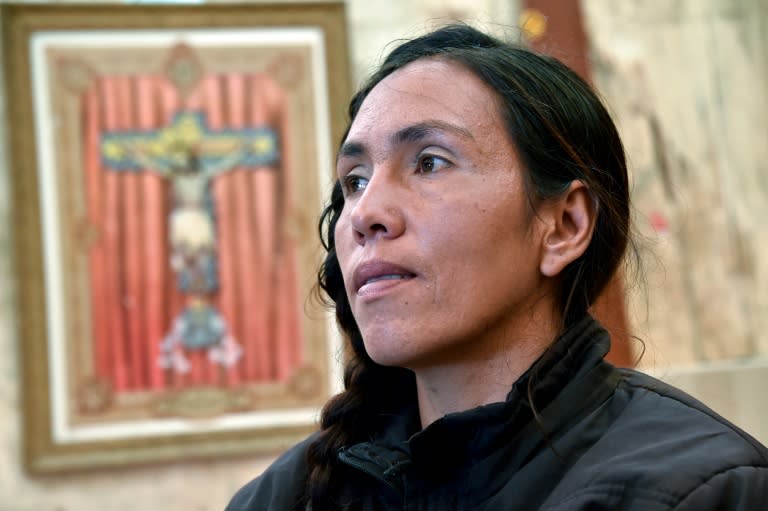Faces of Colombia's war and peace
Before this week's historic peace deal with the FARC rebels, Colombia's civil war killed, bereaved and displaced millions, while thousands of others spent years in the jungle as hostages. Here are portraits of four victims of the 52-year ideological and territorial conflict, which is expected to practically end after Sunday's referendum on the government's accord with the FARC. They are typical faces of a many-sided conflict that Colombian authorities estimate has left 260,000 people dead, 45,000 missing and nearly seven million displaced. - The mother - Judith Casallas's 22-year-old daughter Mary Johana disappeared along with her husband Jose Didier on October 7, 2007. "We have never received a call," said Casallas, 55. "Who did it? To this day, I do not know." Judith has spent nine years searching, hoarding the Christmas presents she has bought each year for Mary Johana. "I hope she will come back and see them, and know that we were always thinking of her." The Revolutionary Armed Forces of Colombia (FARC) have signed an accord to disarm and demobilize, ending the war they have fought against the state since 1964. "When I was little, I was told that the guerrillas were good, that they were the ones helping the people. I hope they remember that, and that they help us to find our relatives," Casallas says. "I hope that whatever happens at least I'll be able to say: 'I now know what happened to my daughter.' And then I can rest." - The hostage - Clara Rojas is now a congresswoman, but 10 years ago she was a hostage in the jungle, threatened constantly with death. The FARC seized her in 2002 along with the presidential candidate Ingrid Betancourt, their most high-profile captive internationally. "We endured nearly six years as hostages. It was a very difficult experience, very hard," Rojas says. "What most affected me was the isolation, being deprived in an instant of your ability to exist, to decide, to think." She says 40,000 people were kidnapped over the past 40 years of the conflict. It has drawn in various groups of armed rebels, paramilitaries, gangs and state forces. Rojas gave birth to a baby boy while in captivity. She declines to talk about the circumstances. Her captivity is painful to recall. "I just want to live for the present and cling to this peace." - The widow - In 2007 the FARC massacred 11 local elected officials it had held hostage for five years in Colombia's Cauca Valley. Among them was Juan Carlos Narvaez. He left behind a daughter and a wife, Fabiola Perdomo, 47. Three weeks ago, Perdomo traveled to Cuba, where the FARC and the Colombian government held four years of peace talks that led to the accord. There she met the men responsible for her husband's killing. They apologized to her. "It is a healthy exercise. It is very painful but very necessary," she said. "Coming face to face with the killers, I could tell them all the damage and the pain I suffered. I could get out all the rage I had carried in my heart for many years." Perdomo works in a government agency helping victims of the conflict. She hears stories like her own every day. Despite her resentment at what happened, she supports the peace deal, which is meant to transform the communist FARC into a political group. Opinion polls ahead of Sunday's referendum indicate that voters will ratify the deal by a wide margin, though more than a third reject it. "We have to back it, to do away with the FARC, but to do away with them in a civilized way," said Perdomo. "We are going to disarm them by voting 'Yes' to the peace accord. Then when we have a chance in the future to confront them politically, we will defeat them at the ballot box." - The displaced - Yomaira Socarras, a mother of four, was twice driven from her home by the threat of violence. She had a few hours to pack her belongings, flee with her children and start anew elsewhere. The first time was in 2005. Right-wing paramilitaries, fighting the leftist guerrillas with state military support, warned her she was in danger. "That was a very calm move. They warned me it was better to leave the area because my husband was a soldier," she says. She left her central home city of Villavicencio with her family and they ended up hundreds of miles away, in Istmina in the northeast. In 2008 she was forced out again by a threat from another side in the war. At dawn one day while her husband was out at work, she received a visit. "About 70 men from the FARC turned up and told me I had to leave, otherwise they would kill me and all my children," she says. She now lives in Soacha, a southern district of the capital Bogota, home to displaced families from across the country. Her husband is ill and does odd jobs to supplement his invalidity benefits. "The hardest thing is managing to start a new life," she said. The FARC accord virtually ends the conflict, but the government has not yet managed to start peace talks with a smaller leftist rebel group, the ELN. Socarras is happy about the FARC deal, but still has doubts. "They are going to disarm... but we do not know whether more armed groups will emerge," she says. "Violence is all around."

